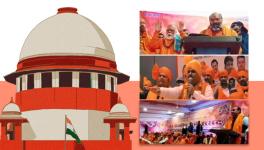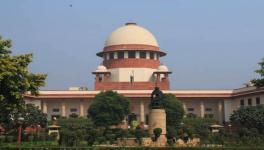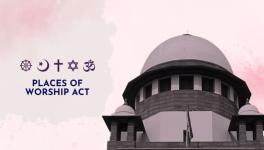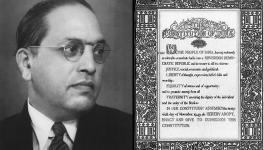Maharashtra: SC Voices Serious Concern Over Governor’s Role in Breaking Legitimate Govt

Case details: Subhash Desai versus Principal Secretary, Governor of Maharashtra
- June 27, 2022 order of Supreme Court vacation bench comprising Justices Surya Kant and J.B. Pardiwala stayed disqualification proceedings against 16 legislators of Shinde-led faction. 12 days given to respond.
- June 29, 2022 order of the Supreme Court refused the plea of Thackeray-led faction to stay the floor test in the Assembly ordered by the governor.
- August 23, 2022 order of reference to five-judge Constitution bench by former Chief Justice N.V. Ramana and Justices Krishna Murari and Hima Kohli.
- Eleven issues were formulated, including the disability attached to the function of the Speaker under the Tenth Schedule of the Constitution whilst disqualification notice pending against them, the limitation on the exercise of discretion by the Governor, and power of the Election Commission to recognise a split in a political party.
Bench: Chief Justice of India Dr. D.Y. Chandrachud, and Justices Hima Kohli, M.R. Shah, Krishna Murari and P.S. Narasimha.
Some major developments: February 17 order of the Election Commission recognised the Shinde-led faction as the ‘authentic’ Shiv Sena, according to it the bow-and-arrow election symbol of the party. This was challenged by the Thackeray-led faction before the Supreme Court, but the court refused to stay the order.
——
ON Wednesday, the Supreme Court Constitution bench, led by Chief Justice of India (CJI) Dr. D.Y. Chandrachud, voiced serious concerns over the role of the Governor in the Maharashtra political crisis. The bench observed that a Governor can never be allowed to ask for a trust vote when there is absolutely nothing to shake the majority of the party in government on the floor of the legislature.
The Constitution bench of five judges, led by Chief Justice of India Dr. D.Y. Chandrachud, comprising Justices Hima Kohli, M.R. Shah, Krishna Murari and P.S. Narasimha continued hearing a batch of petitions relating to the Maharashtra political crisis on the constitutional questions arising from the Tenth Schedule of the Constitution that deals with disqualification of legislators on grounds of defection, including the correctness of the Supreme Court’s judgment in Nabam Rebia, & Bamang Felix versus Deputy Speaker, Arunachal Pradesh Legislative Assembly (2016).
Solicitor General of India Tushar Mehta, representing the former Governor of Maharashtra Bhagat Singh Koshyari, told the court that only in extraordinary circumstances can there be a departure from the floor test rule.
Mehta: Running government after having lost confidence is a larger constitutional sin
Defection is the highest political sin, but running the government after having lost the confidence of the House is a larger constitutional sin to which the governor should not be a party, he said.
He was arguing that the function of the governor has no correlation with the Tenth Schedule or the consequences that flow from it.
At the outset, Mehta told the bench that the Shiv Sena’s legislature party appointed current Maharashtra Chief Minister and Shiv Sena chairman Eknath S. Shinde as its group leader and this fact, which he claims is not disputed, has a bearing on why the governor called Shinde first to stake a claim in the government. It is primarily because the governor is supposed to only contact the ‘elected leader’ of the House.
According to Mehta, Shinde continued to be the leader of the legislature party, and the meeting that was called to appoint Shiv Sena legislator Ajay Chaudhari as the leader was unauthorised and did not meet the requirement of quorum. He also said that a unanimous resolution was passed by the legislators rejecting the resolution to appoint Choudhari as the party leader.
Supreme Court: Where are the material indicators for the Governor to draw an inference to direct a floor test?
According to Mehta, the governor arrived at a conclusion that a floor test was needed for then Chief Minister and Shiv Sena President Uddhav B. Thackeray to prove the majority of his government, based on the resolution of 34 legislators along with a letter which rejected any change in the leadership at the level of the legislature party, letters of 47 legislators alleging threats to their security, and a letter of the Leader of Opposition stating that 39 Shiv Sena legislators wanted to exit the post-election alliance of the Maha Vikas Aghadi (MVA) government (comprising the Shiv Sena, the Nationalist Congress Party and the Indian National Congress).
The governor had relied on these materials to call for a floor test, and then invited Shinde to stake a claim in the government, as per Mehta.
The governor has to only take a prima facie view based on material that indicates doubt in their mind and record their satisfaction that the government has lost confidence in the house, Mehta submitted. That is the standard laid down by the Supreme Court in S.R. Bommai & Ors versus Union of India & Ors (1994) and Shivraj Singh Chouhan versus Speaker, Madhya Pradesh (2020), he explained.
The governor ‘must’, he emphasised, ask for a floor test in such cases, as held in S.R. Bommai.
Mehta also said that the argument of the other side that the legislators should have gone for a no-confidence motion, rather than the governor directing a floor test, does not mean anything because in both cases, numbers would be counted on the House floor.
CJI: Governors must not become willing allies in toppling a legitimate government
The CJI, at this juncture, remarked: “…the governor must be conscious of the fact that calling for a trust vote may lead to a precipitate loss of majority for the government… calling for a trust vote may itself be a circumstance that may lead to the toppling of the government.”
Governors should not lend their office for effectuating a particular result, the CJI told the counsel.
Further, the CJI stated that the letter written by the Leader of Opposition is irrelevant because they often criticise the ruling government. The reliance on the same is no ground for the governor to act.
The letter of the independent legislators on the alleged threat to their security is not a report under Article 356 (provision in case of a failure of constitutional machinery in states) of the Constitution. This also becomes an irrelevant ground to convene a trust vote, the CJI added.
CJI: Legislators being threatened a matter of law and order, nothing to do with the Chief Minister having lost confidence
The CJI said that legislators being threatened was a law and order situation. Justice Kohli remarked that the only thing the legislators wanted was an assurance of their security. This had nothing to do with the Chief Minister losing confidence.
This is no reason for “un-sitting” a government, the CJI concluded. But Mehta answered that it becomes an important ‘ground’ and not a reason when the legislators indicated that they want to withdraw their support because they were being threatened. The court was not convinced by this
The only material available for the governor is the resolution of the 34 legislators, the bench held. The CJI stated that unless circumstances forced the governor to conclude that these legislators would cease to support Shiv Sena, they would have to treat them as continuing members of the Shiv Sena.
Justice Narasimha also pointed out that the resolution merely reaffirms that Shinde continues to be the leader of the legislature party. He asked the counsel to address from where the governor drew an inference to call for a floor test.
Justice Shah said that this communication cannot be read as withdrawing support from the Thackeray-led government.
The CJI then said that it has no bearing on the governor’s action.
Mehta relied on the Supreme Court’s judgments in Rameshwar Prasad & Ors versus Union of India (2006) and S.R. Bommai & Ors, in which it was held that the circumstances invoking the Tenth Schedule are unrelated to the decision of the governor to direct a floor test.
Referring to these, the CJI stated that the potential disqualification of the 34 legislators was irrelevant for the governor while convening a floor test. If that is so, there is no cogent material to support the governor’s action to call for a floor test, it was concluded. Justice Kohli termed the action of the governor a peremptory move.
Mehta: Post-election alliance unnatural
But Mehta told the court that Thackeray ultimately did not face the trust vote that justified the decision of the governor.
Moreover, when Mehta termed the post-election MVA alliance unnatural, the CJI pointed out that the coalition had existed since 2019. “What happened overnight after three years of happy marriage?” he asked.
The CJI also questioned if the governor directs a floor test merely because there is a policy difference in a group of legislators within a party. You are virtually breaking a party, the CJI stated.
If there is nothing to indicate that the government has lost the majority in the house, the issue of who is going to be the leader of the house is alien to the governor; it is a matter of internal party discipline, the bench surmised.
The CJI expressed the view that the people may ditch their government, but trouble starts when governors become ‘willing allies’ by calling for a trust vote, which is a very sad spectacle in democracy.
The governor must exercise his powers with the greatest circumspection, he cautioned.
Sibal: On what basis do they say they are the Shiv Sena?
Senior advocate Kapil Sibal, for Thackeray and his Shiv Sena (Uddhav Balasaheb Thackeray) faction, in his rejoinder told the bench that under no constitutional parameter does the governor have any power to recognise a faction of a political party.
The governor is part of the legislature but not a member of the legislative assembly. He can only recognise a political party and there is no separate identity of the legislator than the one associated with the party, Sibal told the bench.
Sibal said: “If you actually hold their submissions to be correct, you bring back the regime of ‘Aaya ram, gaya ram’ because anybody can collect the numbers in the manner that they are collected nowadays, whisk them away to any other state, keep them in comfort … and come back and topple the government.”
He pointed out that the Shinde faction is arguing before the court that it is the ‘real’ Shiv Sena. But it did not contend this from the beginning.
“This is a mockery, my Lord, that is happening in our country… It is not about Maharashtra. It is about Meghalaya; it is about Manipur and tomorrow it will be about Uttar Pradesh… Anything can happen anywhere if you allow this to happen. It is about our future.
“They have no basis to say they are the Shiv Sena!…The whole purpose of the Tenth Schedule is to differentiate between the legislative party and the political party. Their whole argument is that there is no difference between the legislative party and the political party. ‘I am a political party!’
If you are the political party, why did you move the Election Commission?”
Sibal: Appointment of whip by political party only
Sibal pointed out that the Shinde faction has not dealt with the concept of whip. It is only the political party that appoints the whip. So, the whole argument is jettisoned by them saying Shiv Sena Parliamentarian Sanjay Raut appointed the whip. He is not even a member of the legislative assembly. He is empowered by the party.
Sibal queried: “So, this whole argument that I sat in Assam, appointed [Shiv Sena legislator Bharatshet] Gogawale as the whip, where does this come from in the constitutional terms?
“Thirty-four of you sitting in Assam, in the lap of [Bharatiya Janata Party], will appoint Gogawale as a whip? And then come to court and say, we have already removed you! Under what power?”
“How is the Governor talking about Gogawale being the whip?” The Governor in his letter to Thackeray had mentioned this. The Governor also stated that the leader of the House was Shinde.
Sibal submitted that if a faction goes to the Governor, he cannot recognise it. They must go to the Election Commission if they claim they are the political party.
Sibal: Who is Eknath Shinde in constitutional terms?
Till July 4, Shiv Sena legislator Sunil Prabhu was the recognised whip of the party in the Assembly. On July 3, Prabhu issued a whip that legislators cannot vote for the Bharatiya Janata Party (BJP) candidate as Speaker but the rebel Shiv Sena legislator Viplove Bajoria, who was the first to join the Shinde faction, disobeyed.
Moreover, Shinde was not the legislature party leader as his removal was conveyed to the Deputy Speaker and the latter recognised it.
“How could the governor call Eknath Shinde? Who is Eknath Shinde in constitutional terms?”
Sibal: Governor impliedly recognised a split in political party
Last month, arguments on the issue of constitutional limitations to the governor’s role in the context of the Tenth Schedule were initiated by Sibal.
Sibal earlier told the court that the Maharashtra governor’s actions of ordering a trust vote led to the recognition of a split in the political party.
The floor test was ordered when the disqualification petitions against 39 legislators from the Shinde faction were pending before the Deputy Speaker of the Vidhan Sabha Narhari S. Zirwal.
‘Split’ under paragraph 3 of the Tenth Schedule has now been deleted by the Constitution (Ninety First Amendment) Act, 2003.
By convening a floor test, governor implicitly decided that rebel legislators have not voluntarily given up membership
This also meant the governor had implicitly decided that rebel legislators had not voluntarily given up their membership of the House under paragraph 2(1)(a) of the Tenth Schedule on the grounds of defection, Sibal had pointed out.
The governor ordered a floor test in the Maharashtra Vidhan Sabha after the request was made by Shinde, and then Leader of Opposition and current Deputy Chief Minister, Devendra G. Fadnavis of the BJP.
Continuing the arguments on the discretion of the power, senior advocate Dr. Abhishek Manu Singhvi had stated that the governor could not have interfered and ordered a floor test when the disqualification petitions were sub-judice on two levels — before the Supreme Court and before the Deputy Speaker.
Dr. Singhvi had referred to a letter written by the governor to the Maharashtra legislative assembly secretary. The letter mentioned that there is ‘discontent’ within the Shiv Sena legislature party and that certain legislators wanted to exit the then MVA coalition.
Through the letter, the governor conveyed that Thackeray-led Shiv Sena has lost the majority in the House. Dr. Singhvi had questioned the constitutional basis for the governor to make this statement.
On the other hand, Mehta told the bench that the governor’s direction to Thackeray to prove his majority before the House was to reach the satisfaction that a floor test is required. The governor is not supposed to reach the satisfaction that Thackeray has lost the majority.
However, the CJI had corrected Mehta by pointing out that this was exactly what the governor did through his letter. The letter stated that the governor was confident that Thackeray had lost the majority of the House.
While the Deputy Speaker had issued notices for disqualification, a no-confidence motion was passed against him, which he rejected on the grounds of lack of authenticity of the signatures and the source.
During the proceedings before a former CJI Ramana-led bench, last year in July, the Deputy Speaker, in response to the notice, had replied that his office had allegedly received a notice signed by 39 legislators from an unknown person. Similarly, a mail was sent to him from a mailing address of an advocate Vishal Acharya appending the said notice.
He had said that the Nabam Rebia judgment did not apply in his case since there was no valid notice of his removal as required under Article 179(c) of the Constitution read with the Maharashtra Legislative Assembly Rules, 2015.
Shinde: Floor test necessary to assess faith in existing government
The arguments of the petitioners had been countered by senior advocate Neeraj Kishan Kaul, representing the Shinde camp, earlier this month.
Referring to the Supreme Court’s judgment in Shivraj Singh Chouhan, Kaul had argued that convening a floor test is the surest method of assessing the impact of resignation of legislators in an expression of a lack of faith in the existing government, on the collective will of the House.
Moreover, the proceedings under the Tenth Schedule operate independently of the power of the governor, he had told the court.
In the context of the governor impliedly recognising the split, Kaul had said that the distinction between legislature and political party is artificial and unnecessary as the latter has the mandate of the former.
Kaul had clarified that their case is simply to determine who is the rival faction under paragraph 15 of the Symbols (Reservation and Allotment) Order, 1968, which talks about the power of the commission in relation to splinter groups or rival sections of a recognised political party.
Further, Kaul had pointed out that the Supreme Court has already laid down the parameters to recognise a rival faction within a recognised political party in Sadiq Ali versus Election Commission of India (1971). The Election Commission had last month allowed the Shinde faction to retain the bow-and-arrow symbol reserved under the Symbols Order, through the test of legislative majority laid down in Sadiq Ali judgment.
Kaul argued: “…my case is not that a majority cannot incur under [paragraph] 2(1)(1) [of the Tenth Schedule]… for you to say this is only a legislature party and not a political party without any basis. In any case, the Speaker has to decide it [but] you want to bypass the whole route and come to the Supreme Court in Article 32 and say the Supreme Court must decide before the Speaker which is in the teeth of [Kihoto Hollohan versus Zachillhu (1992)]. My coming under [Article] 32 on Nabam which is on entirely different footing…”
It had been further argued that the Symbols Order, in paragraphs 6 (classification of political party) and 6A( conditions for recognition of a state party), requires taking into consideration vote percentage, elected representatives and elected members of a legislature party. That is why the legislature party remains an organic part of a political party, Kaul had said.
In this context, a paragraph from Sadiq Ali was read out, which states: “… [O]ne of the factors which may be taken into account in treating a political party as a recognised political party is the number of seats secured by that party in the House of People or the State Legislative Assembly or the number of votes polled by the contesting candidates set up by such party…”
Internal dissent not synonymous with voluntarily giving up membership
Kaul had previously told the bench that internal dissent cannot be termed as voluntarily giving up membership of a political party. Kaul pointed out that the dissent was with regard to the post-election alliance with the Nationalist Congress Party and the Indian National Congress.
Whilst pending disqualification, legislators continue to discharge their functions
Pointing out the Speaker’s constitutional obligations as has been held in S.R. Bommai & Ors, senior advocate Harish Salve, also leading the Shinde camp, had said that neither the Speaker nor the governor is supposed to do the mathematics. The governor has to call for a floor test.
Salve remarked, “…when Governors have sacked Governments doing head counts, Your Lordships have taken him to task saying you are failing your job. Why? Because it is not for the governor to count heads. What Mr. Sibal and Dr. Singhvi are trying to do is persuading Your Lordship to count heads.”
Referring to numerous instances where serious electoral offences have been committed, Salve had told the bench that these legislators continue to hold offices despite the allegations.
That is the bane of our system, he had said.
In this context, Article 191(2) of the Constitution was also referred to. According to Article 191(2), a person shall be disqualified for being a member of the Legislative Assembly or Legislative Council of a state if he is so disqualified under the Tenth Schedule.
Salve pointed out that a disqualification takes away the membership of the legislator and it cannot occur until the Speaker decides upon it. Any other view, he said, would paralyse the working of the Assembly.
Kaul had also made a similar argument by referring to Speaker Haryana Vidhan Sabha versus Kuldeep Bishnoi & Ors (2012) and Shivraj Singh Chouhan to state that the pending disqualification against legislators does not mean that legislators stop discharging their duties as a member of the House.
Get the latest reports & analysis with people's perspective on Protests, movements & deep analytical videos, discussions of the current affairs in your Telegram app. Subscribe to NewsClick's Telegram channel & get Real-Time updates on stories, as they get published on our website.
























